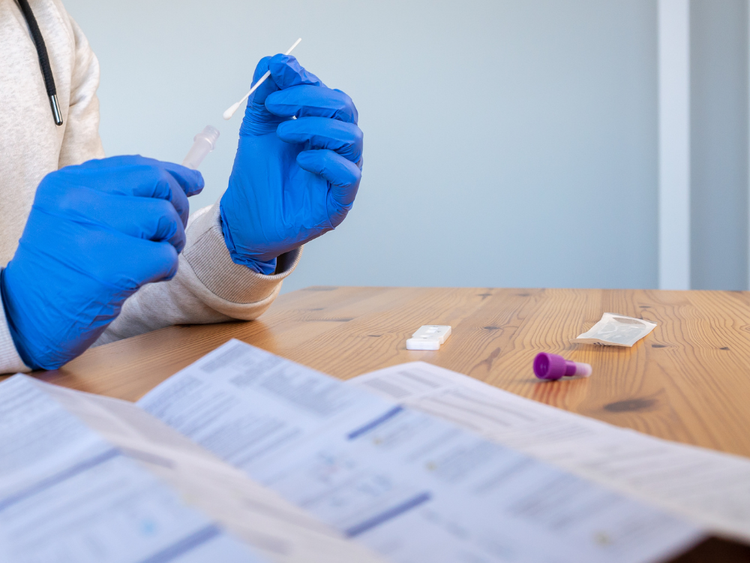
When it comes to pharmaceuticals and medical devices, regulatory compliance stands as a cornerstone of patient safety and well-being. Yet, ensuring compliance with evolving standards and regulations poses significant challenges for organizations worldwide. Traditional methods of producing Instructions For Use (IFUs) and Patient Information Leaflets (PILs) have often proven inadequate in meeting these demands.
These documents serve as crucial sources of information for patients, providing guidance on the proper use of medical devices and medications. Inaccuracies or errors in these leaflets can have severe consequences. When it comes to pharmaceutical and medical device labeling, the risks can even be life-threatening.
Therefore, ensuring the accuracy and compliance of patient information and instructions for use leaflets is essential for safeguarding patient health and maintaining regulatory adherence. However, with the introduction of automation in the labeling and artwork industry, a new era of efficiency, compliance, and accuracy has arrived in IFU production.
Addressing Regulatory Gaps
As Bob Tilling, our label and artwork expert, highlights, regulatory compliance is crucial. Mid-sized device manufacturers often have to manage between 100 and 1,000 IFUs. Updating these documents to comply with the new EU Medical Device Regulation (EU MDR), which is significantly longer and more detailed than the previous directive, is a massive task.
Non-compliance with EU MDR labeling requirements not only puts patients at risk but also exposes organizations to legal repercussions and reputational damage. Traditional systems, including Product Lifecycle Management (PLM) systems, often fall short in controlling layout and content. Veraciti emerges as a beacon of hope, offering a comprehensive solution that not only manages content but also controls layout, ensuring compliance with regulatory standards.
Streamlining Processes, Eliminating Errors
The traditional approach to IFU production involves input from several stakeholders across the globe, consuming time and increasing the risk of errors. Veraciti revolutionizes this process by automating the generation of leaflets from a pre-approved single source of truth with automatic translations available, eliminating the need for manual intervention when creating and updating the leaflets.
Breaking Language Barriers, Ensuring Consistency
For IFU leaflets, it's crucial that the information can be correctly understood by patients and healthcare professionals worldwide. Veraciti enables organizations to swiftly generate IFUs in multiple languages within seconds. Unlike competitors who rely on less accurate methods like Google Translate, Veraciti offers pre-approved translations derived from a single source of truth, ensuring consistency and accuracy across all IFUs. This capability is a game-changer, empowering non-native speakers to access vital medical information with ease and confidence, ultimately contributing to improved healthcare outcomes globally.
Making the Move to eIFUs (Electronic IFU)
The transition from traditional paper-based IFUs to electronic formats marks a significant leap forward in efficiency and accessibility. Electronic IFU leaflets offer streamlined access, enhanced user experience, the ability to deliver multilingual content seamlessly, and significant sustainability benefits. With electronic IFUs, the process of updating information is far less time-consuming and involves less waste.
As Peter Muller explains in Med-Tech Intelligence, "Paper-based IFUs/PILs are printed in bulk, leading to waste when product/manufacturing information or safety advice needs to be updated. There may also be a level of risk to patients if they are accessing information that has been superseded."
Veraciti empowers organizations to generate IFUs in electronic formats, including XML files, ensuring compliance with regulatory standards while enhancing accessibility and integration. This capability enables organizations to navigate regulatory complexities with ease while delivering an unparalleled user experience.
Case Studies: Empowering Össur and Cardinal Health
Our collaboration with Össur, a leading provider of Class II medical devices, exemplifies the transformative impact of automation in IFU production. Össur faced numerous challenges, including disparate legacy systems, delays in product launches, and limited control over IFU assets. With Veraciti, Össur consolidated IFU phrases into a centralized system, enhanced visibility, and streamlined the approval process, ensuring compliance with regulatory requirements.
Similarly, our partnership with Cardinal Health, a global leader in healthcare services, highlights the critical importance of accuracy and compliance in IFU production. By streamlining the compliance process and eliminating errors, we have helped Cardinal Health navigate the complexities of regulatory standards, particularly in the context of MDR compliance.
Safeguarding Lives, Ensuring Compliance
By adopting our approach, the creation of multiple language EU MDR compliant 30-page IFUs has been reduced from 3-5 hours to just 30-40 minutes, with the time taken to generate individual labels reducing from 1 hour to around 10 minutes. For Class III devices alone, this efficiency has recovered 5 person-years of lost time.
In conclusion, automation in IFU production is a game-changer for compliance, accuracy, and efficiency. By leveraging the power of technology, organizations can streamline processes, eliminate errors, and ensure compliance with regulatory standards. Our partnerships with Össur and Cardinal Health underscore our commitment to empowering organizations with complete regulatory confidence.
For more information on the latest EU MDR and the issues with IFUs, read our blog: "EU MDR Labeling Compliance - Are We There Yet?" Looking for more advice? Speak to one of our experts by emailing enquiries@kallik.com.
